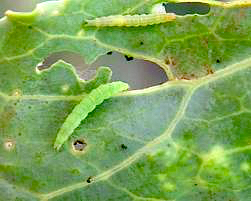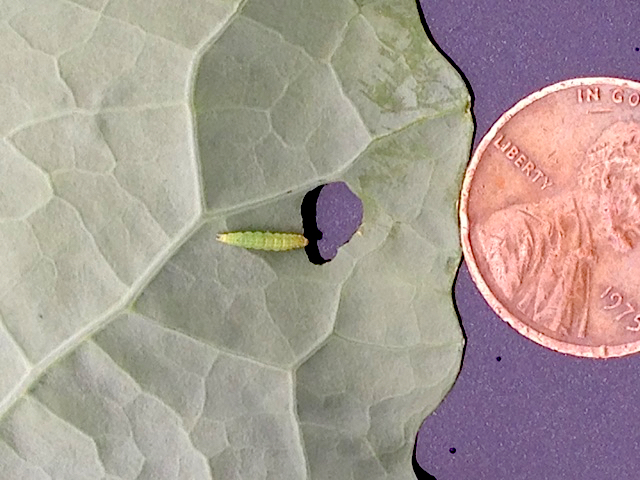Diamondback moth larvae (DBM) are small – less than or equal to one-half inch – but can build to high numbers, becoming quite destructive. High populations frequently occur in plantings when nearby, over-mature fields are not destroyed promptly.
DBM populations are commonly resistant to insecticides in the synthetic pyrethroid (IRAC 3A) and carbamate (IRAC 1A) classes, so proper identification is critical. DBM larvae taper toward both ends, and thrash violently when disturbed.
DBM may be managed in organic systems with spinosad based insecticides. Other, recently developed, insecticides are also effective. See the Commercial Vegetable Production Recommendations for labeled products.


